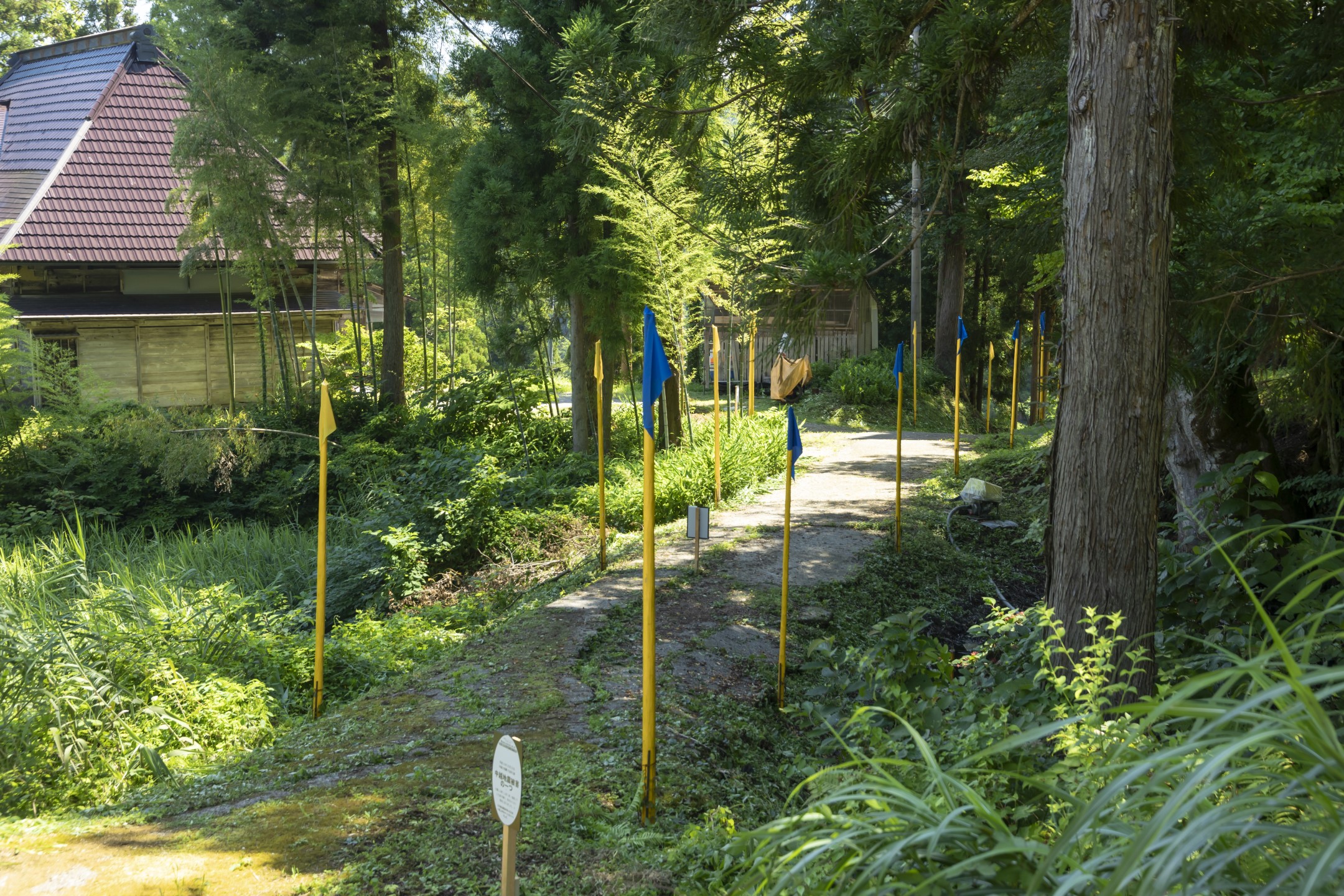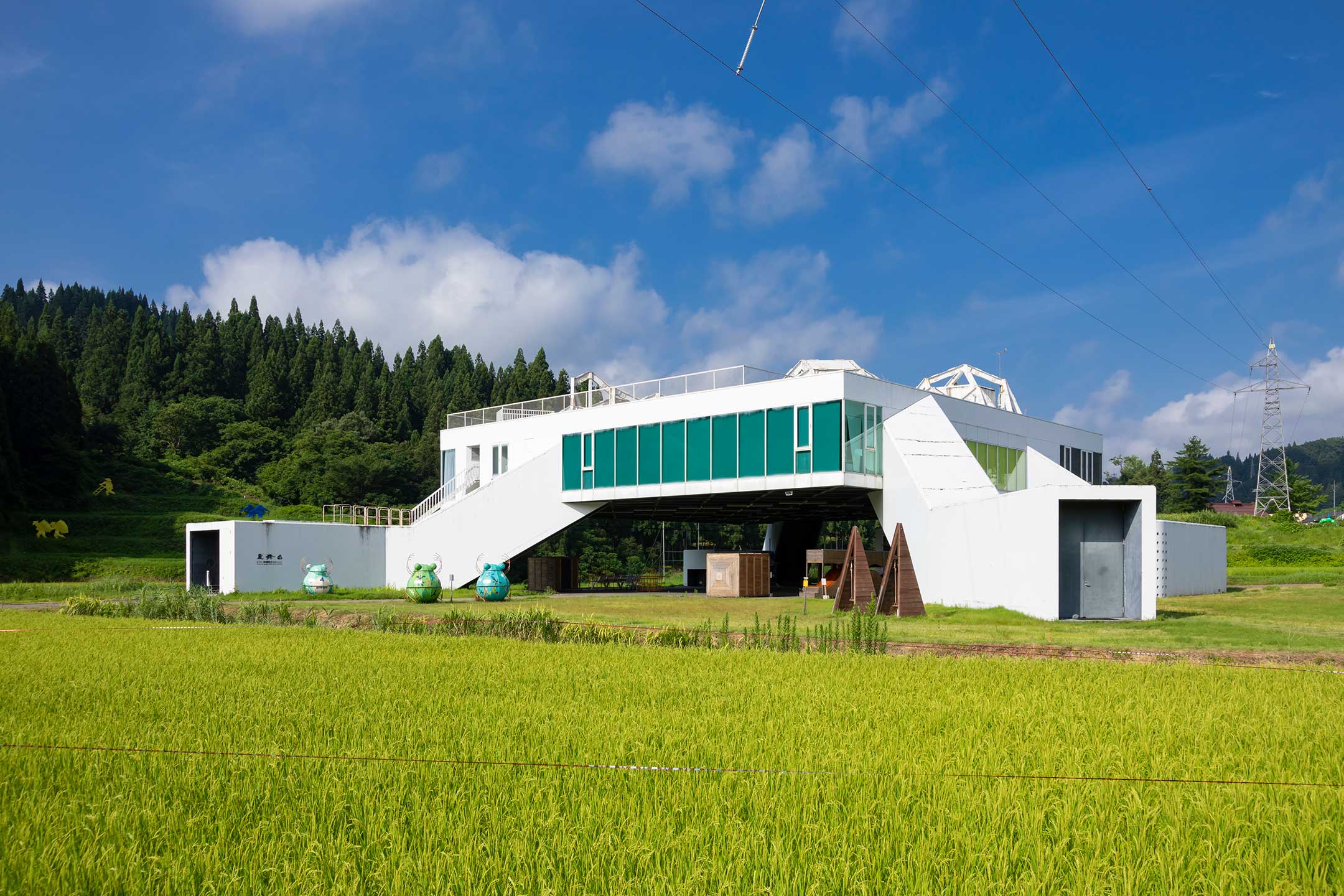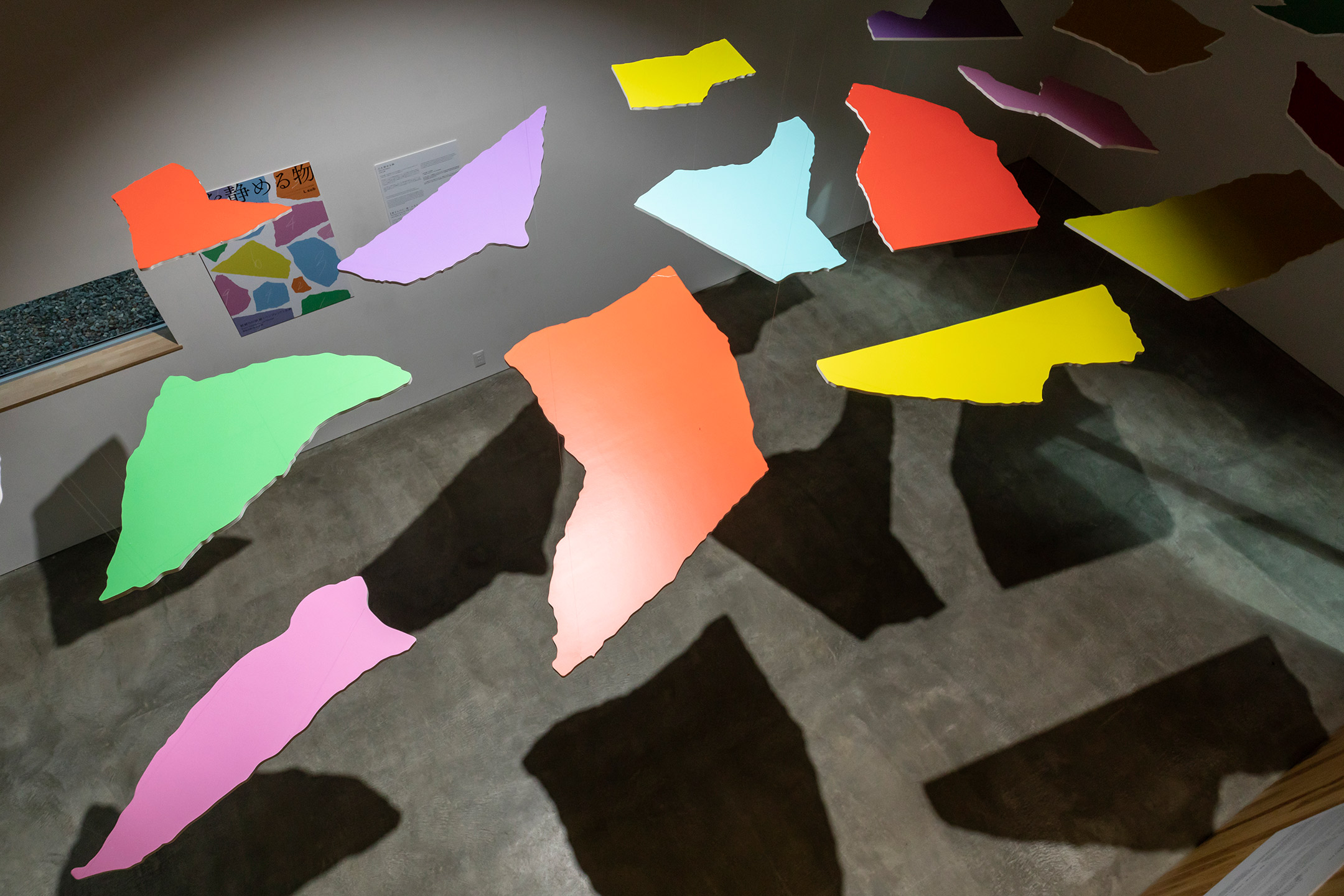
About the artwork
About the artwork
【Two Kotsunagi villages】
There was once a village called Kotsunagi in Tokamachi-city. I will consider the background leading to the closure of the “two Kotsunagi villages”, one in Matsudai and the other in Nakajo・Tobitari in Tokamachi. The place-name “Kotsunagi”stands for a key point of traffic routes connecting main roads with pathways or one village with another and also a point where we descend from the mountain pass. The settlement is thought to have been located at a quiet point in the traffic.
The two villages were closed in 1992 and 2007 respectively and the evidence of their existence of 400 and 800 years are preserved as “inscriptions”. Both villages developed their histories and cultures by finding original ways of doing agriculture and leading life while adapting to the natural environment of the region. Such distinctive agriculture and lifestyle of each community resulted in diversity that supported the ecology of the region while at the same time improving adaptability to natural disasters and changes in the social environment.
The monument says that people after people left the village as they were influenced by “the Income Doubling Plan” advocated by the national government in the Showa era. Also, one could read in the inscriptions of the closure of the village about how the consolidation of communal facilities in each district due to the grand mergers of municipals in the Showa and Heisei eras led to the collapse of local communities and the decline of productivity in agriculture, making it impossible for communities to survive. This could also be seen in the trace of how the land had been used.
Under such circumstances, the Seeds and Seedlings Law has recently been amended to protect the intellectual property rights of seeds and seedlings. However, there are concerns about this movement as the law will make it difficult to maintain agricultural diversity, for example, by restricting the unique “home propagation” that farmers in each region have traditionally maintained. As the globalisation of industry and economy progress and the climate change issues become more apparent, it is important to reconsider the role of regional agriculture with diversity which had contributed to sustainable development.
“It was all fun in the past” – from cultural anthropological fieldwork(Installed in the former Kotsunagi village in Tokamachi-city)
Kotsunagi village in Nakajo・Tobitari was under the direct influence of the social changes brought by the“Income Doubling Plan after the war”in the Showa era; depopulation and the consolidation of communal facilities in each district along with the grand mergers of municipals; and the collapse of local communities and the decline of productivity in agriculture. The Chuetsu Earthquake in October 2004 accelerated the depopulation of the village which eventually lead to the closure of the village in 2007.
According to the record of the village and local histories, the population of the Kotsunagi village was 20 in 1602 (Edo era), 112 in 1877 (Meiji era) which changed from 80 to 38 from 1970 to 1985 (Showa era). The highest number was recorded in 1947 on the national census, just after the war, as 20 households with 185 people including 50 children which was reduced to 4 households with 12 people at the time of closure of the village.
Various communal facilities were set up in the village over the long history including something very interesting such as Agricultural Cooperative (Kotsunagi JA, 1958), shared workshops, clinics, fishponds, primary schools, communal hearths, shrines, farm roads, cemeteries, simple post offices, temples, water weirs for power generation, masonry bridges, plants (trees and tree species), natural disasters (floods, earthquakes) and “epidemics” in the Meiji era. There is a very interesting record, especially as we navigate through the COVID-19 pandemic, on the relationship between the occurrence of infections diseases such as cholera and typhoid fever in 1879 and 1880 in the Meiji era and the shrines.
This project attempts to reveal how the villages were in the past; what facilities existed for the community, and the history of peaceful life in the village then through cultural anthological research method.
First of all, within a diameter of 300 metres of the site where the building of the Agricultural Cooperative, the centre of the community and key facility of the economic and social life, stood, we would expose the settlement’s bygone topsoil surface. The purpose of this research is to find a trace of the old settlement and their lives from the exposed site, and consider why the village was formed and then closed here so that we could use our findings in the future. Close to the site where the Agricultural Cooperative stood is a trace of cracks in the ground caused by the Chuetsu earthquake that determined people leaving the village.
While we know most about the topography of the time, slopes, plants, paving stones, fishponds, cooking stoves, open spaces, temples and shrines, cemeteries, halls, remains of village roads, and the remains of cracks in the ground from the Niigata Chuetsu earthquake in 2004, we are planning to conduct a research on many things that have disappeared through interviewing local people. In order to explore how the community existed, I used yellow poles tracing small pathways that were walked on by villagers every day. I couldn’t get clarity from the elderly member of the current village in regard to the time of burial and cremation, a funeral custom, which provides an indication of anthropological period classification. However, I managed to confirm there was a bone-eating ritual in order to inherit the wisdom of the ancestors as a funeral custom. There is a wide range of topics to be clarified by future research.
Information and Map
| Artwork no. | T406 |
|---|---|
| Production year | 2022 |
| Opening hours | Daytime |
| Admission | - |
| Area | Tokamachi |
| Village | Former Kotsunagi |
| Venue | Tei, Nakajo-cho, Tokamachi City |
















